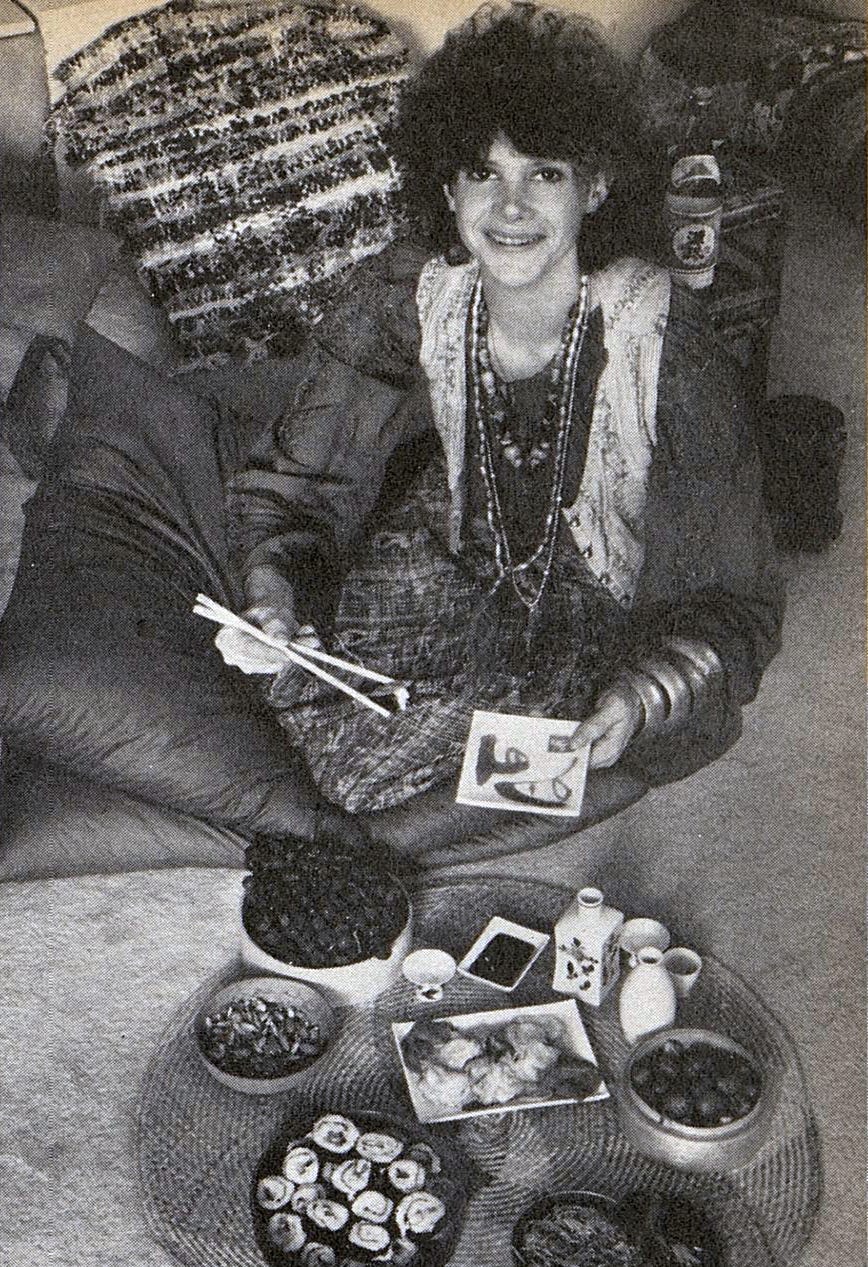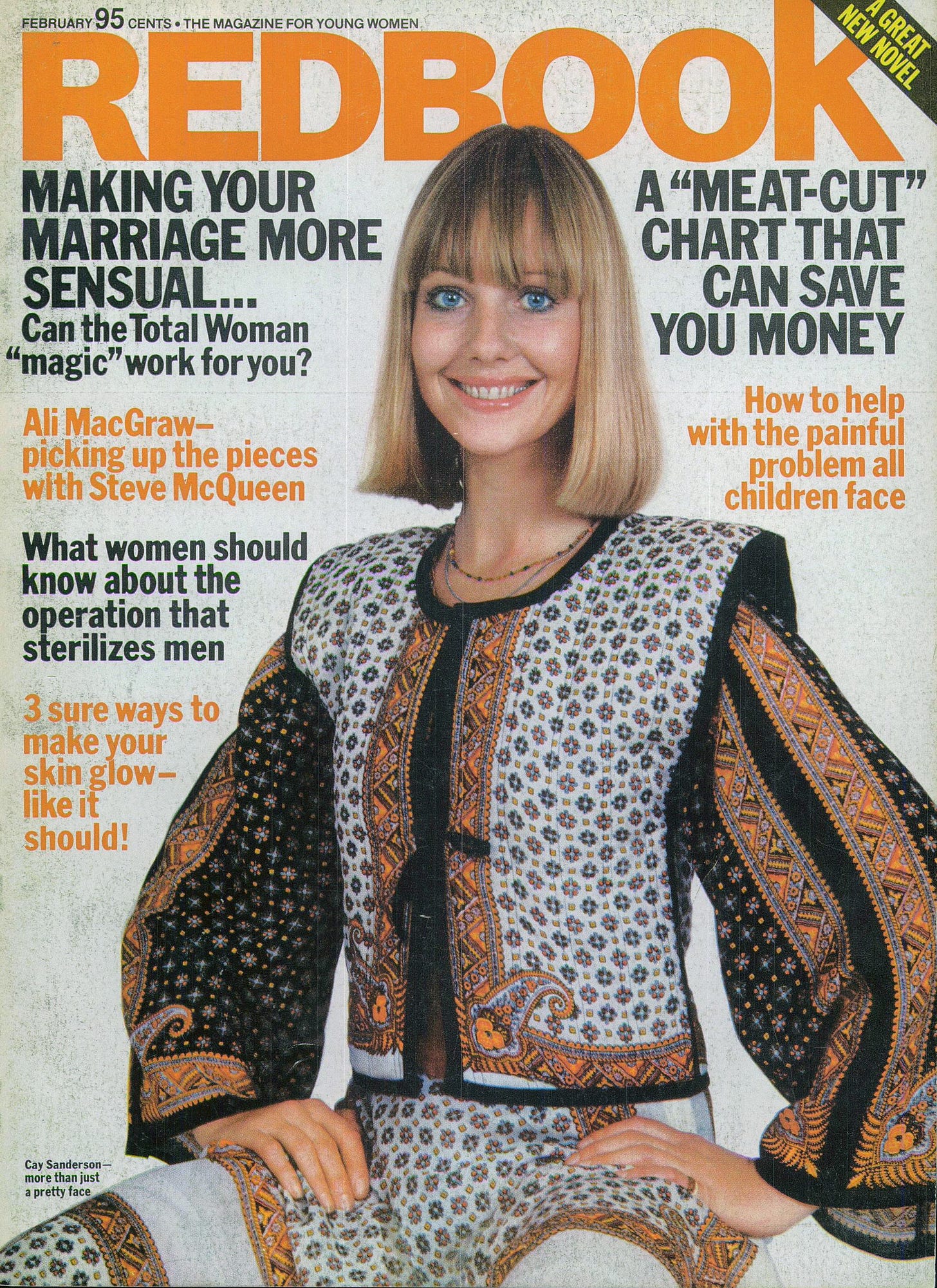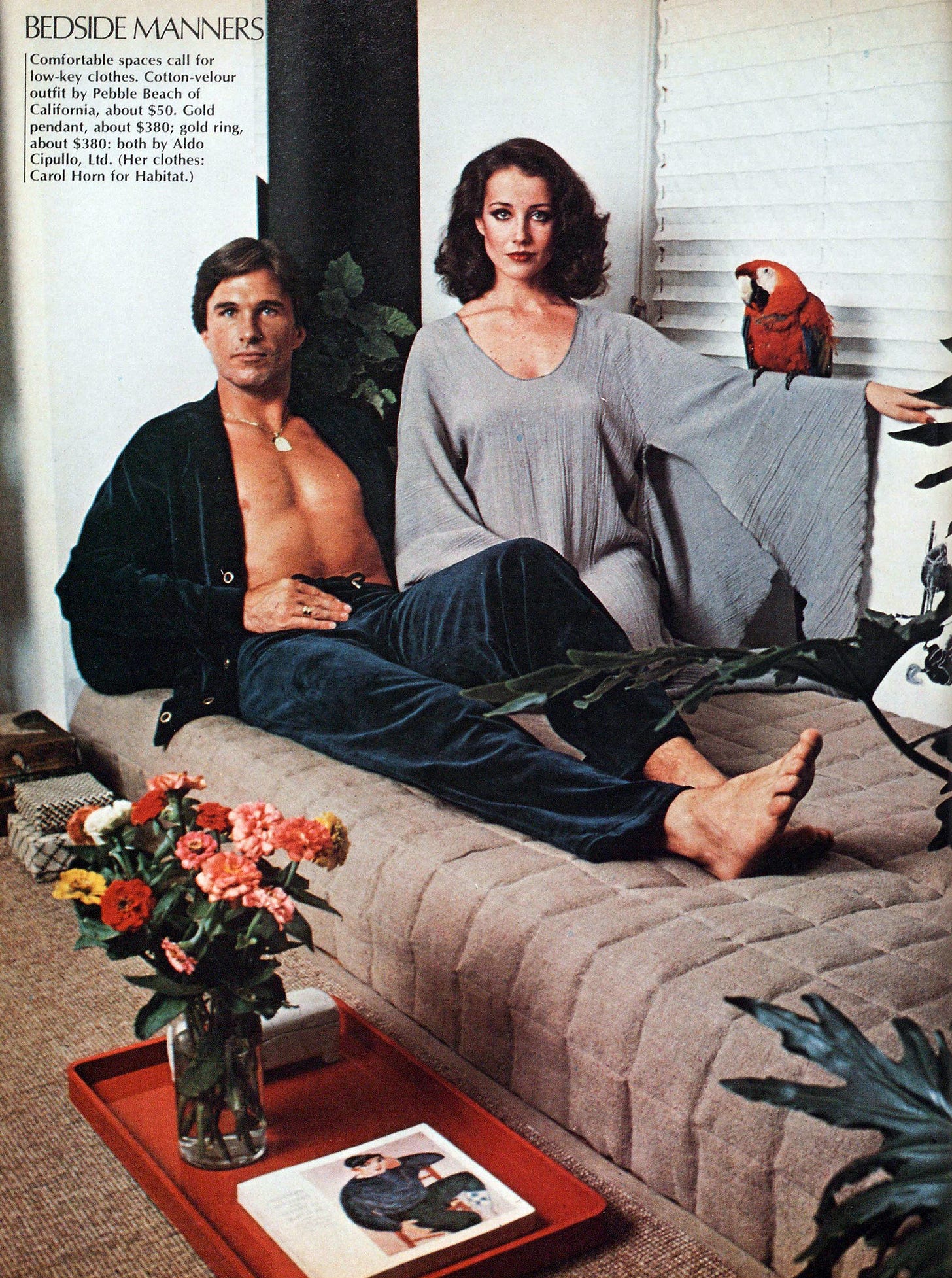Unlike Geoffrey Beene, Mary McFadden, Kasper, and Albert Capraro, fashion designer Carol Horn’s entertaining style took a decidedly less formal and ornate tone. As mentioned in the House Beautiful profile from 1976 below, Horn lived in a studio apartment with all aspects of life, from sleeping to eating to working, kept at floor level. Atop piles of pillows, Carol hosted friends and colleagues in a loose and informal manner, reminiscent of the loose and informal garments that were her signature.

I’ve been meaning to write a longer biography of Carol since she passed away this past January, at age 86, and now that I’ve spent all my free time this week researching her, that will be coming soon. Born in Brooklyn, Horn never expected to end up in fashion. She dropped out of Boston University and Columbia and was a secretary before marrying young. “I really never thought I was going to work. I thought I’d lead a typical middle-class life with children in the suburbs.” When the marriage quickly failed, she found herself forced into job seeking—drifting from job to job until she found herself on the display team at Macy’s. Through the contacts she made there, Horn began designing. For several years she designed trendy clothes for sportswear and juniors companies, before slowly evolving her own vision of dress—one not centered on fads, but on a timelessness that often echoed non-western traditional garment silhouettes. As she told the New York Times in 1972, “Now I can’t stand the drastic changes and the gimmicks. I even want my colors to be pure. If you have good shapes and real colors, you don’t look at your clothes six months later and wonder why you bought them. They stay with you like good music or good books.” Malcolm Starr gave her the opportunity to have her own line and create the way she wanted to in 1972; two years later, she founded her own company, Carol Horn’s Habitat.
Horn’s designs were often described as “ethnic,” an appellation she agreed with; “I like a timeless kind of look. The ethnic things have been around many years—and will always be around.” What she designed were not replicas of specific non-western garments using traditional fabrics; instead, she was inspired by a silhouette, the way a garment twisted and folded around the body, a type of fastening. If she did use a non-western textile, it was always in an unconventional way; in 1977 she told Cosmopolitan, “Last year I trooped around from village to village in Guatemala buying up blankets to be made into skirts.” For the most part, prints and patterned wovens were used sparingly with monochrome pieces predominating. Sheer crinkled gauze, chunky knits, earth tones, and kaftans were her best-sellers. Just one year after founding her own company, in 1975 she won a Coty Award for most innovative designer of the year.
“The space you live in should reflect the way you live… who you really are.”
Keep reading with a 7-day free trial
Subscribe to Sighs & Whispers to keep reading this post and get 7 days of free access to the full post archives.






